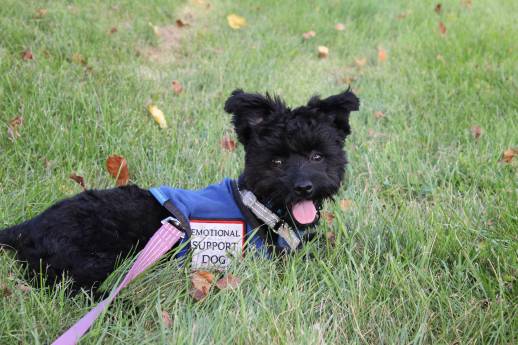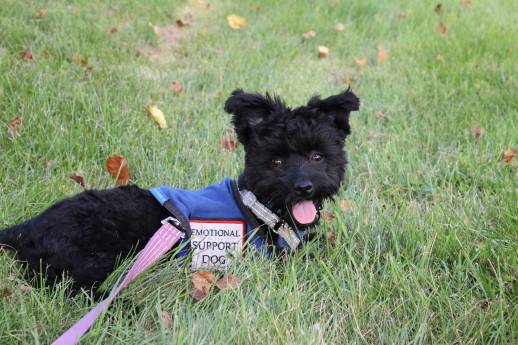An emotional support animal is a pet that provides emotional support and comfort to its owner. A dog is the most common type of ESA, but it is not the only one. Other animals include cats, parrots, turtles, rabbits, and more.
We help people get the proper documentation to make their pet an official Emotional Support Animal. Online approval in minutes - Housing & Travel letters.
People with disabilities often require an assistance animal in order to live independently. For example, people who have epilepsy often use a service animal as a preventative measure in order to stop seizures from occurring. A service animal can also be used to aid with a variety of other medical conditions.
It is important to note that emotional support animals are not service animals. Service animals are trained to perform specific, complex tasks that assist people with disabilities. For example, a guide dog is trained to navigate a building in the case that their owner cannot do so independently, such as if they’re blind.
However, an emotional support animal is not professionally trained. Instead, they are simply a pet that provides comfort and emotional support to their owner. In other words, an ESA is not a service animal. Even so, they still need the right certification to be acknowledged by the state as one.
Understanding Emotional Support Animal Certification in North Dakota
North Dakota requires an aspiring ESA owner to complete a certification process. The process involves getting your diagnosis reviewed by a licensed mental health professional (LMHP), which is necessary in order to receive the ESA certification.
The process of getting your diagnosis reviewed is straightforward, and it can be done online or by visiting their office. The LMHP will decide whether your disability makes you eligible for an ESA. In general, you’re only considered eligible to own an emotional support animal if your disabilities considerably hinder your ability to function independently.
We help people get the proper documentation to make their pet an official Emotional Support Animal. Online approval in minutes - Housing & Travel letters.
For example, if you often experience panic attacks while you’re in public, then you may be eligible to own an ESA. However, if you’re able to go through your day by yourself just fine, then you may not be eligible to own an ESA.
As a rule of thumb, remember to only seek this ESA letter of proof from an LMHP who is in the same state as where you live. This is because the laws may differ in each state. You should also take care to renew this letter each year, as an ESA letter is only valid for twelve months after it is first written.
With this ESA letter, you will be able to bring your emotional support animal to public and private establishments all over North Dakota. Make sure to always have this letter in hand whenever you’re in public, so that you don’t get fined or asked to leave the establishment.
Under the Fair Housing Act (FHA), you will be able to ask your landlords for accommodations related to your ESA by showing the letter. However, your pet must not cause disruptions or interfere with the rights of other tenants. In other words, you will need to follow the same rules that apply to other animals in the same situation.

Kim
Kim is a talented author, who loves animals especially dogs. She engaged in writing books and articles relating to animals a decade ago. Kim resides in Chicago with her husband and son. The family is the proud owner of a dog and a parrot (Jack and Lily). Kim wanted more than these two pets, but her husband put his foot down... She often visits elementary schools to talk to the kids about what she learned about pets and how they could learn from them.
Review symptoms, medications & behavior to keep your pets healthy with a Vet Online in just minutes.
Ask a Vet Live Now




